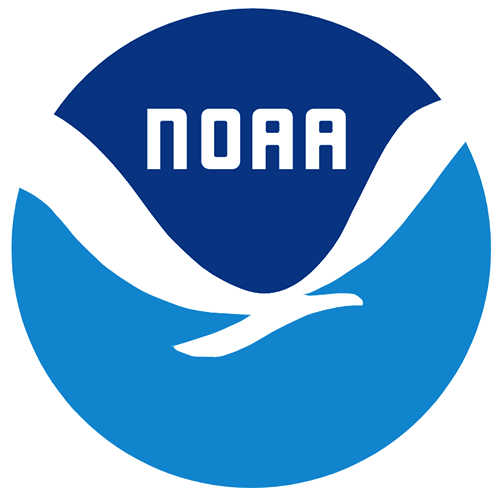2010 USACE NCMP Topobathy Lidar: Atlantic Coast (NY) - A
Welcome Guest ( Sign In )
NOAA
 These files contain topographic lidar data classified as bathy (29), ground (2) and unclassified (1) in accordance with the American Society for Photogrammetry and Remote Sensing (ASPRS) classification standards. These data were collected by the Compact Hydrographic Airborne Rapid Total Survey (CHARTS) system along the coast of New York. These data were collected at the same time as 2010 USACE NCMP Topobathy Lidar: Atlantic Coast (NY), however, there was a significant event (unnamed storm) that caused changes to the coastal zone. The two data sets were collected roughly a week apart. Please see the URL section below for a link to that data set.
CHARTS integrates topographic and bathymetric lidar sensors, a digital camera and a hyperspectral scanner on a single remote sensing platform for use in coastal mapping and charting activities. Data coverage generally extends along the coastline from the waterline inland 500 meters (topography) and offshore 1,000 meters or to laser extinction (bathymetry). The topographic lidar sensor has a pulse repetition rate of 9 kHz at 1064 nm (near-infrared wavelength). The bathymetric lidar sensor has a pulse repetition rate of 1 kHz at 532 nm (green wavelength). Native lidar data is not generally in a format accessible to most Geographical Information Systems (GIS). Specialized in-house and commercial software packages are used to process the native lidar data into 3-dimensional positions that can be imported into GIS software for visualization and further analysis. The 3-D position data are sub-divided into a series of LAS files, each covering approximately 5 kilometers of shoreline. The format of the file is LAS version 1.2.
This data set is an LAZ (compressed LAS) format file containing LIDAR point cloud data.
These files contain topographic lidar data classified as bathy (29), ground (2) and unclassified (1) in accordance with the American Society for Photogrammetry and Remote Sensing (ASPRS) classification standards. These data were collected by the Compact Hydrographic Airborne Rapid Total Survey (CHARTS) system along the coast of New York. These data were collected at the same time as 2010 USACE NCMP Topobathy Lidar: Atlantic Coast (NY), however, there was a significant event (unnamed storm) that caused changes to the coastal zone. The two data sets were collected roughly a week apart. Please see the URL section below for a link to that data set.
CHARTS integrates topographic and bathymetric lidar sensors, a digital camera and a hyperspectral scanner on a single remote sensing platform for use in coastal mapping and charting activities. Data coverage generally extends along the coastline from the waterline inland 500 meters (topography) and offshore 1,000 meters or to laser extinction (bathymetry). The topographic lidar sensor has a pulse repetition rate of 9 kHz at 1064 nm (near-infrared wavelength). The bathymetric lidar sensor has a pulse repetition rate of 1 kHz at 532 nm (green wavelength). Native lidar data is not generally in a format accessible to most Geographical Information Systems (GIS). Specialized in-house and commercial software packages are used to process the native lidar data into 3-dimensional positions that can be imported into GIS software for visualization and further analysis. The 3-D position data are sub-divided into a series of LAS files, each covering approximately 5 kilometers of shoreline. The format of the file is LAS version 1.2.
This data set is an LAZ (compressed LAS) format file containing LIDAR point cloud data.
